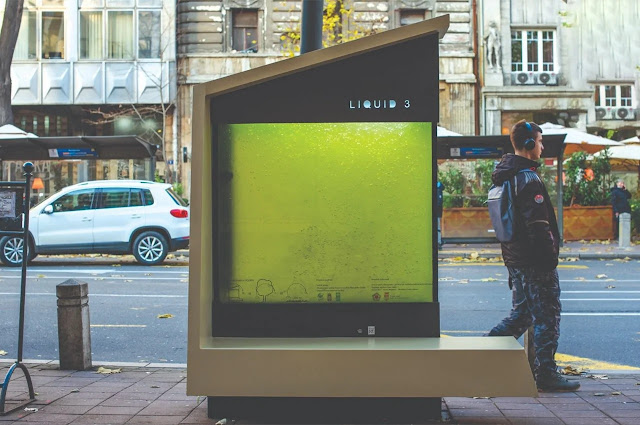666

Planting trees is the most common approach for companies and governments to deal with climate change. However, the method is only appropriate for forests or large abandoned areas. We cannot plant a large number of trees in dense cities where the pollution is concentrated. Fortunately, Serbian scientists have developed a liquid tree to produce clean oxygen.
The Big Problem
According to the IHME (Institute for Health Metrics and Evaluation) reports, pollution is the major cause of human death, three times more than any disease such as HIV AIDS, malaria and tuberculosis.
In the context of Serbia, the region has two coal power plants that contribute heavily to the destruction of its environment. As the city is densely populated, traffic and heating and cooling of buildings are also the pollution-causing factors. Therefore, creating green areas in the city is a complex target to achieve due to the lack of free space.
The Solution- Making of The Liquid Tree/ LIQUID 3
Dr Ivan Spasojevic, a researcher at the University of Belgrade, Serbia and his team have developed an innovative urban bioreactor called ‘The Liquid Tree’ or ‘LIQUID 3’ to improve the air quality by reducing greenhouse gases emissions such as carbon dioxide, methane, nitrous oxide, through photosynthesis. Photosynthesis is a natural process by which plants make oxygen, consuming water, sunlight and carbon dioxide.
LIQUID 3 has a tank-like structure and contains six hundred liters of water containing microalgae. These are microscopic algae that use carbon dioxide to produce pure oxygen through photosynthesis. Microalgae are 10 to 50 times more efficient than plants and trees in terms of producing oxygen.
The team stated that their goal was to install an effective technology for purifying the air in urban areas where there is no free space for planting trees. In intense pollution, many trees might not survive, but algae can deal with high pollution levels.
How LIQUID 3 Functions?
According to the researchers, this bioreactor comes with multiple advantages or functions besides purifying the air. It is configured like a small meeting hub with the facility to charge mobile phones. Plus, it transforms into a green neon lighting station to guide the way to residents at night. LIQUID 3 comes with an integrated bench that serves as a social gathering platform for the city residents where they can discuss issues, especially climate change, and feel encouraged to fight against global warming.
Further, Dr. Ivan Spasojevic stated that they have used single-celled freshwater algae that are found in the ponds and lakes in Serbia. They might even grow in tap water and are resistant to temperature fluctuations. Due to this, the system does not require special maintenance. Further, the biomass generated by microalgae after photosynthesis can be used as a fertilizer. After 45 days, pouring new water and minerals into the reactor will allow the indefinite growth of the algae. This ensures the durability of the bioreactor.
The Bottom Line
The LIQUID 3 project aims to popularize the use of microalgae in Serbia as they can be used as compost in agriculture, managing wastewater, producing biofuel and biomass and purifying the air in urban pockets. This approach gives a new way to combat climate change.
Contributed by: Simran Dolwani

